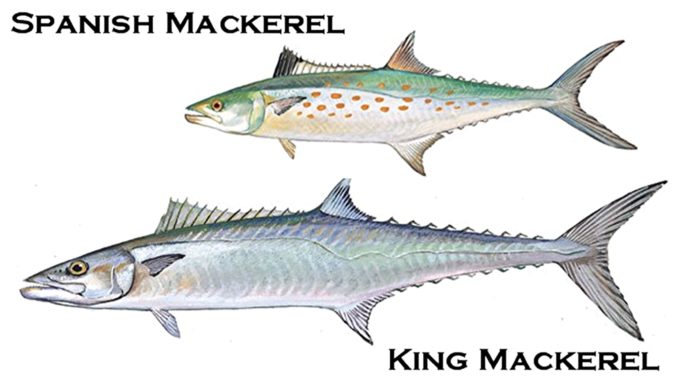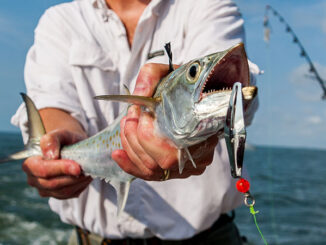
It’s easier to confuse them than most anglers realize
When the water temperature in nearshore waters reaches the upper 70s, it’s not uncommon to see a blending on the fishing grounds between Spanish mackerel and king mackerel.
The biggest difference is obviously size, but how do you differentiate a small king from a big Spanish?
The coloration of a Spanish is bluish-green on the back, with numerous yellow to bronze spots on silver-colored sides. Spanish mackerel have a distinguishing black spot at the leading edge of the dorsal fin, and its lateral line dips gradually from head to tail.
King mackerel are a lighter, iridescent blue-green with silver sides. The fish’s snout is much shorter than the rest of the head. Big kings lack spots, but smaller kings often have them. The lateral line on kings often dips sharply midway between head and tail.
Larger adult Spanish inhabit primarily offshore coastal waters out as far as 50 miles, preferring rocky bottoms and artificial reefs, but they can also be found along beaches and in shallow estuaries, bays, and sounds, often in large and fast-moving schools.
Like Spanish, king mackerel prefer warm, clear waters, showing a preference for both nearshore and offshore habitats and live bottom. Both young and adult kings range from offshore areas to inshore waters and typically feed from the surface to moderate depths in water column. Kings tend to move inshore on higher tides during the summer. Fish caught near fishing piers are typically older juveniles.




